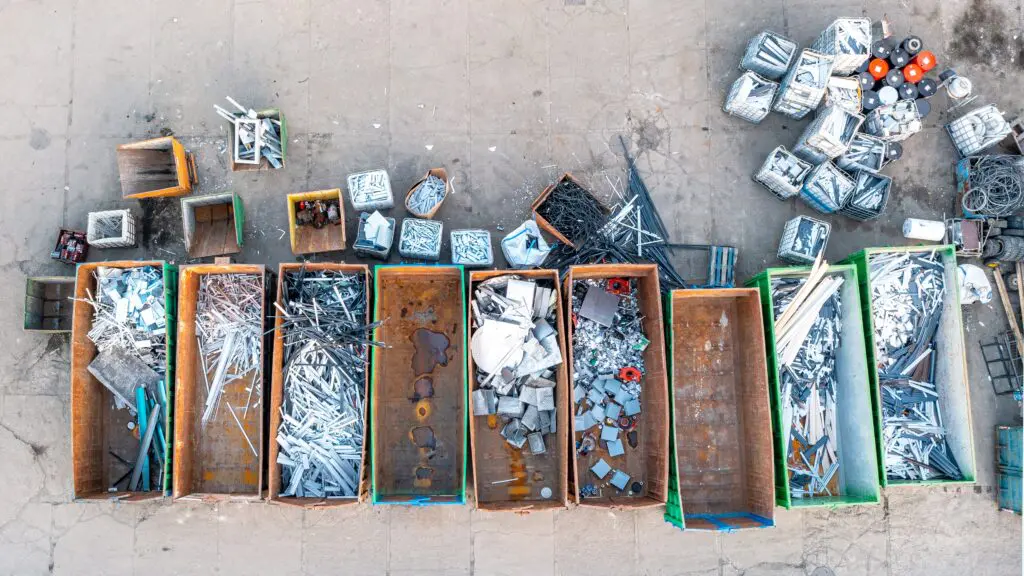Russia’s withholding of gas supplies means higher energy prices, crippling the smelters that are big customers for secondary non-ferrous metals.
European commodity markets are suffering a massive impact from the war in Ukraine. In addition to the problems that have been known for months, such as poor-functioning global supply chains and the effects of the Covid pandemic, the continent’s economy is now burdened by another issue: energy.
In the past few weeks it has become clear how little self-sufficiency Europe has when it comes to available energy. Wind, solar and water energy are far from being able to meet the demand for energy, in the short and medium terms at least, while in many places mining is politically challenging, as is nuclear power.
Some European countries, most notably Germany, have relied on Russian gas for too long – and this source in particular is now drying up. At the time of writing the main pipeline between the two countries has been shut off. Industry, as much as the public, is concerned that there will be supply difficulties in the coming months. Almost all sources of energy require large amounts of gas, which will presumably not now be available in sufficient quantities.
Smelters cut back
Electricity is so expensive that the European aluminium industry can no longer produce at reasonable prices. Many aluminium works have therefore reduced their smelting operations and buy significantly less scrap on the market. This puts both the industry and the recycling economy under pressure. Market participants are correspondingly anxious about the future, and Europe as an industrial location is in danger.
As if that wasn’t enough of a challenge, the low level of the River Rhine because of the European drought forced some ship and barge operators to reduce capacity to navigate the major waterway in August. Loadings of 33-50% require more vessels, thereby adding to costs. Demand for alternative transport, such as road or rail, also pushed up prices. A typical barge carrying 5 000 tonnes would have to be replaced by 20 trucks.
In the US, the latest indicators reported by ISRI in August included gloomy returns from S&P Global’s Flash Composite Purchasing Managers Indexes which combine the outlook from both the services and manufacturing sectors. The US index declined from 47.7 in July to 45.0 in August, well below the 50-level which marks expansion from contraction.
The August reading marks a 27-month low and the fastest rate of decline in the last 13 years outside of the early months of the pandemic. S&P reports put the decline down to ‘material shortages, delivery delays, hikes in interest rates, and strong inflationary pressures all served to dampen customer demand’.
Meanwhile, the Flash PMI Composite Output Index in the Eurozone fell from 49.9 in July to 49.2 in August, an 18-month low. The same index for the UKalso hit an 18-month low in August at 50.9, while a similar one for Japan fell for the first time in six months.
Volatility concern
The bleak outlook for non-ferrous markets was reflected in the latest World Mirror from the Bureau of International Recycling (BIR) which noted a transformation with metal prices in recent weeks down 10-30%. The prognosis was that they remain vulnerable to the high levels of volatility.
‘With global headlines dominated by bad news, metals markets are deemed unlikely to receive an injection of confidence and stability in the near term, especially as holiday periods are now curtailing business activity levels in many parts of the world,’ the Mirror comments.
It notes that market challenges include high inflation and interest rate rises; China’s indebted housing sector; uncertainty over gas supplies to Europe during the Ukraine conflict; a growing labour market crisis; transportation difficulties; and the strength of the US dollar.
The squeeze on energy supplies is having a major impact on German industry. BIR also points out that smelters without long-term energy supply contracts are facing difficult times and it warns that smaller operators could go out of business.
In Ukraine, street collections of brass are reportedly only a fifth of pre-conflict volumes. While domestic copper collections are covering internal demand, exports and imports are said to be non-existent. Meanwhile, scrap suppliers in Russia are carrying stock purchased which they are not ready to move at current market prices because of a lack of hedging.
Among more positive news reported is the expectation that India’s GDP will grow by at least 7% this year while China has announced plans to increase ferrous scrap consumption to 320 million tonnes by 2025, along with a goal of 20 million tonnes of recycled non-ferrous metals in the next five years.
FREIGHT RATES EASE?
An accelerating decline in container spot rates is being seen as evidence of a downturn in the market, according to analyst Lars Jensen of Vespucci Maritime. Jensen was talking to The Loadstar, which noted the WCI US west coast rate fell by late August to US$ 6 127 per 40ft, 46% lower than a year ago, while the figure for North Europe declined to US$ 8 010, 42% down.
The Loadstar said it had seen quotations from China to the UK at around US$ 7 000 per 40ft with one intermediary at Felixstowe in the UK claiming offers of below US$ 6 000.
Read the full market analysis in our latest issue >>
Don't hesitate to contact us to share your input and ideas. Subscribe to the magazine or (free) newsletter.



